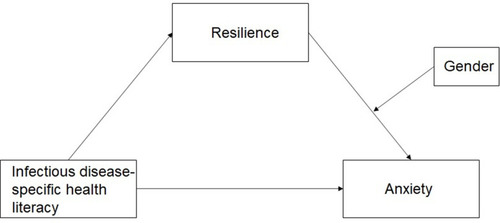Figures & data
Table 1 Descriptive Characteristics of the Sample and Their Relationships with the Main Variables
Table 2 Relationships Between Infectious-Disease-Specific Health Literacy, Resilience, and Anxiety
Figure 2 Mediation model.

Figure 3 Moderated mediation model.



